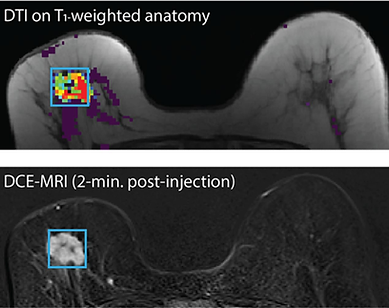Research
We develop the next generation of magnetic resonance spectroscopic human neuroimaging tools, to understand how our brain remodels itself during learning, how new information is encoded and retrieved, and what happens when these mechanisms fail.
Acquisition of Motor Skills
How do we learn to play the piano, or recover lost motor skills following a stroke? One of our main goals is to understand how new - and old - motor skills are encoded on multiple temporal and spatial scales in the brain, ranging from brain network connectivity to neurochemical inhibitory and excitatory changes, using Magnetic Resonance Imaging (MRI) and Spectroscopy (MRS).


Multiparametric Spectroscopy
Magnetic Resonance Spectroscopy (MRS) conventionally quantifies the concentrations of different neurochemical. We have shown that, by using temporally-varying radiofrequency fields, we can simultaneously quantify metabolite concentrations and relaxation times. This allows us to independently monitor alterations to the neuronal and astrocytic subcellular microenvironment in diseases such as breast cancer and Alzheimer's Disease.

Lighting-Fast Spectroscopic Imaging
Is depression glutamatergic in nature? Is neuronal damage diffuse in traumatic brain injury? To answer such questions we develop state-of-the-art signal reconstruction algorithms, complex acquisition pulse sequences, and statistical models to achieve lightning-fast spectroscopic imaging of the human brain.

Adaptive Magnetic Resonance
MRI acquisitions are static by nature: the electromagnetic fields inside the MRI scanner do not depend on the patient's specifics. We challenge that paradigm by modifying the electromagnetic fields inside the scanner in real time, creating adaptive pulse sequences which tailor themselves to the incoming data using a Bayesian statistical framework.
I. Beracha, A. Seginar & A. Tal, Magn Reson Med 90:839 (2023)

Spectral-Temporal Fitting
MRS can be used to dynamically observe how neurotransmitter concentrations change over time. The resulting 2D spectral-temporal datasets are highly correlated. We develop new spectral fitting algorithms which take advantage of those correlations; And information-theoretic approaches to modeling the data and push the sensitivity limits of MRS.

To The Clinic
Our cutting-edge spectroscopic techniques have been used in multiple clinical studies in leading medical centers in Israel and abroad, and have helped us understand the neuronal basis of mild traumatic brain injury; uncover the hidden astrocytic damage occurring in patients with Multiple Sclerosis; and deciphering the change of the lipid microenvironment in breast cancer.
I. Kirov, A. Tal et al, J. Neurology (2012)
J. W. Pan, A. Antony, A. Tal et al, NMR Biomed (2021)
N. Nissan, A. Kulpanovich, ..., A. Tal, Eur J Radiology (2023)


